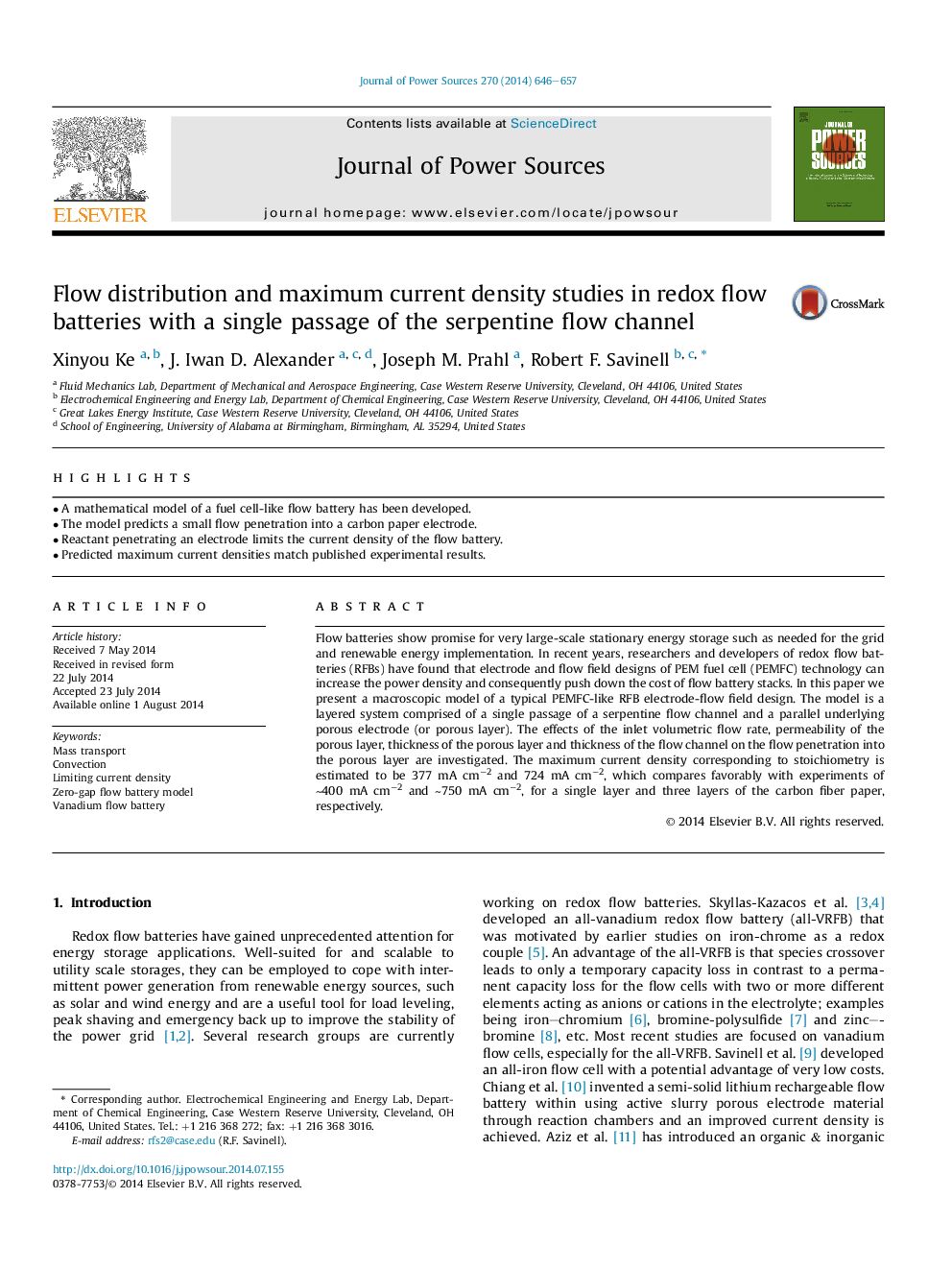| Article ID | Journal | Published Year | Pages | File Type |
|---|---|---|---|---|
| 7735633 | Journal of Power Sources | 2014 | 12 Pages |
Abstract
Flow batteries show promise for very large-scale stationary energy storage such as needed for the grid and renewable energy implementation. In recent years, researchers and developers of redox flow batteries (RFBs) have found that electrode and flow field designs of PEM fuel cell (PEMFC) technology can increase the power density and consequently push down the cost of flow battery stacks. In this paper we present a macroscopic model of a typical PEMFC-like RFB electrode-flow field design. The model is a layered system comprised of a single passage of a serpentine flow channel and a parallel underlying porous electrode (or porous layer). The effects of the inlet volumetric flow rate, permeability of the porous layer, thickness of the porous layer and thickness of the flow channel on the flow penetration into the porous layer are investigated. The maximum current density corresponding to stoichiometry is estimated to be 377Â mAÂ cmâ2 and 724Â mAÂ cmâ2, which compares favorably with experiments of â¼400Â mAÂ cmâ2 and â¼750Â mAÂ cmâ2, for a single layer and three layers of the carbon fiber paper, respectively.
Related Topics
Physical Sciences and Engineering
Chemistry
Electrochemistry
Authors
Xinyou Ke, J. Iwan D. Alexander, Joseph M. Prahl, Robert F. Savinell,
